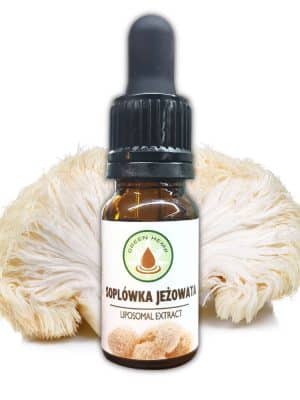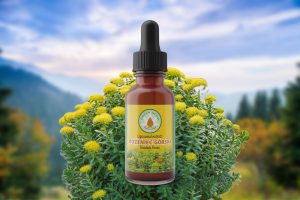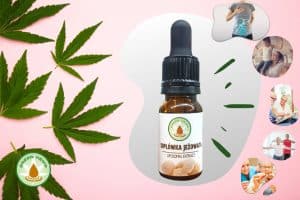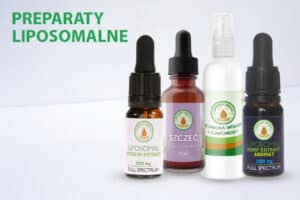
Sophora coneflower – phytochemical composition and therapeutic potential shown in studies
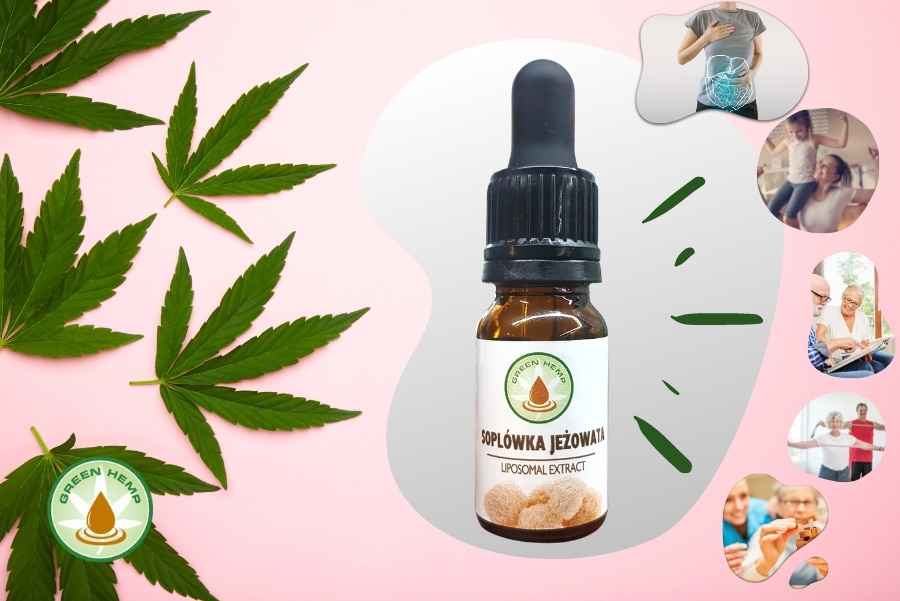
Hedgehog soplolly
Hedgehog soprano(Hericium erinaceus) has attracted the interest of researchers in recent years due to its phytochemical potential. This fungus is also called Lion’s Mane mushroom or monkey’s head. Both the mycelium and fruiting bodies of soplolly contain numerous bioactive compounds with promising therapeutic effects demonstrated in in vitro, in vivo (animal) and clinical trials with patients. There are reports indicating that consumption of this mushroom can help with various health problems, such as Alzheimer’s disease, autoimmune diseases and cancer. Preparations containing Hericium erinaceus have not been registered as drugs. Products based on this fungus should therefore be considered as dietary supplements or functional foods.
Hericium erinaceus is an edible mushroom found in North America, Europe and Asia. It grows in the north of these continents in temperate zone forests. The appearance of the soplin is very distinctive – it consists of long whitish spikes resembling a beard. The spikes of the mushroom do not have distinct caps, and its fleshy tissue takes on a hemispherical shape. Soft thorns hang from a hard, hidden, unbranched clump attached to the tree. The flesh is white when the fruiting body is young. Older fruiting bodies gradually turn yellowish brown over time. Devoid of chlorophyll, the fungus is a saprotroph that grows mainly on dead wood. It can be found in the forests in late summer, although it is quite rare in Poland. The flavor of the soplolly is often described as “similar to seafood.”
Soplum grows relatively slowly and is a fairly demanding fungus in terms of growing conditions. Its growth is strongly influenced by environmental factors such as air circulation, light, temperature, humidity and pH. This fungus is very sensitive to the concentration ofCO2 in the environment. When the amount of carbon dioxide in the air is too high, the fruiting body develops into a coral-like deformed fungus. The content of bioactive components in soplar is significantly influenced by the material on which it grows. This fungus absorbs minerals from the soil. Unfortunately, when the culture medium is contaminated with heavy metals or radioactive elements, the fruiting body accumulates them. Therefore, for the nutritional value and safety of using soplówka, a suitable, reliable source of raw material is of great importance.
The therapeutic potential of the soplin
Lion’s Mane mushroom is widely used in Asian countries (China, India, Japan and Korea) for both culinary and medicinal purposes. Its traditional use in cooking and therapy thus fits in with the tenets of functional foods. Although the use of soplin in traditional medicine is well known, the results of studies on its therapeutic potential did not begin to appear in the scientific literature until the 1990s. In the 1970s. Most of the research work described was carried out by Chinese scientists.
At present, the available clinical trial results are insufficient to allow the introduction of coneflower preparations into therapy as drugs. At the same time, the available array of in vitro and animal test results is very promising. An important advantage of the described mushroom is the negligible side effects associated with its intake. This makes the use of soplar preparations a safe supplementation or support for conventional therapy, and the mushroom itself can be an ingredient in meals that have a functional food character.
Ongoing research is now focusing on the promising neuroprotective potential of substances contained in coneflower. The mushroom is promising in tests as a beneficial therapeutic in neurodegenerative diseases, as well as in the treatment of nerve damage. The antioxidant and anti-inflammatory effects of the active compounds contained in soplola have also been demonstrated. As an edible and medicinal product, Hericium erinaceus can favorably influence processes that regulate the expression of cytokines and transcription factors at the molecular level. According to the study, the substances in soplva are likely to inhibit inflammatory reactions and oxidative stress in the body.
Phytochemical composition of the soplol
According to chemical analysis, 100 grams of dried soplolly fruitcake contains about 22.3 grams of protein, 3.5 grams of fat, 64.8 grams of carbohydrates and 4.3 grams of water. It contains 16 different amino acids, including seven esogenous ones. The peculiar taste and odor sensed when eating the mushroom come from a combination of chemical aromatic components, such as essential oils and nitrogenous base derivatives. Soplum contains a unique variety of phytonutrients, including amylase, laccase, hericerin, ferulic acid, lectins and numerous biologically active polysaccharides.
The most important polysaccharides identified in the soplane are beta-glucans, alpha-glucans and glucan-protein complexes. It is with these bioactive compounds that the therapeutic properties of the fungus have been linked. Beta-glucan has the ability to lower LDL cholesterol levels in the blood, and consequently, its presence in the diet may reduce the risk of cardiovascular disease Various mushrooms, such as lingzhi, shiitake and soplova, due to their beta-glucan content, are being intensively studied for their beneficial effects on the immune system.
Effects on the nervous system
The neuroprotective effect of soplol has been demonstrated in both in vitro and animal tests. In tests on mouse models of Alzheimer’s disease, administration of Hericium erinaceus powder with the diet reduced symptoms of damage to spatial memory and visual recognition.
Clinical trials have tested the effects of soplol on patients suffering from depression. The study observed a reduction in depressive symptoms and anxiety in peri-menopausal women consuming 2 grams of powdered fruiting body per day for 4 weeks. In a clinical test conducted with patients with mild cognitive impairment, oral administration of 1 g of powdered raw material 3 times a day for 16 weeks had a beneficial effect on participants’ cognitive abilities as controlled by tests. No adverse reactions occurred among the participants in the described studies.
Effects on the digestive system
In vitro studies have shown that soprano extracts inhibit the growth of Helicobacter pylori. H. pylori is a bacterium found in the stomach that is a major pathogen of chronic gastritis, peptic ulcers, as well as gastric adenocarcinoma. In animal tests, however, it has been shown that freeze-dried fruitpods of soplolly can level damage and swelling of the gastric mucosa and provide cytoprotection against ethanol-induced ulcers.
A clinical trial involving 50 patients with chronic atrophic gastritis was conducted in 1985. Participants were given H. erinaceus extract for 3 months. At the end of the study, a reduction in inflammatory markers and epigastric pain were observed in patients.
Effects on the cardiovascular system
In vivo studies in rodents indicate an anti-ischemic effect of polysaccharides contained in H. erinaceus. Extracts of soplar fruiting body had a positive effect on the lipid profile of rats with diet-induced hyperlipidemia and artificially induced diabetes.
Substances contained in soplol have shown the ability to lower plasma triglycerides, total cholesterol, low-density lipoprotein cholesterol and phospholipids in rats, suggesting a hypolipemic effect of the raw material.
Antimicrobial activity
Under in vitro laboratory conditions, extracts from H. erinaceus have shown activity against human pathogenic bacteria, including some antibiotic-resistant strains. Among other things, the ability of the active compounds contained in soplva to inhibit the growth of methicillin-resistantStaphylococcus aureus(MRSA) has been demonstrated. Also of great importance is the inhibitory effect shown in tests on the growth of the bacterium H. pylori, which is a pathogen of the human digestive tract that is the cause of peptic ulcer disease.
Side effects
Although a small number of clinical studies on the therapeutic properties of coneflower have been described in the scientific literature, none of the participating patients reported serious side effects. In one test, in which powdered mushroom was given to participants at a dose of 1 g 3 times a day for 16 weeks, mild stomach pain and diarrhea were reported. The remaining clinical trials of soplola did not report symptoms associated with adverse effects of the raw material.
Content and elaboration: Sara Janowska, M.Sc. in pharmacy
Literature:
Jiang, S., Wang, S., Sun, Y., & Zhang, Q. (2014). Medicinal properties of Hericium erinaceus and its potential to formulate novel mushroom-based pharmaceuticals. Applied microbiology and biotechnology, 98(18), 7661-7670.
Friedman, M. (2015). Chemistry, nutrition, and health-promoting properties of Hericium erinaceus (Lion’s Mane) mushroom fruiting bodies and mycelia and their bioactive compounds. Journal of Agricultural and Food Chemistry, 63(32), 7108-7123.
Liu JH, Li L, Shang XD, Zhang JL, Tan Q. Anti-Helicobacter pylori activity of bioactive components isolated from Hericium erinaceus. J Ethnopharmacol. 2016;183:54-58.26364939
Mori K, Inatomi S, Ouchi K, Azumi Y, Tuchida T. Improving effects of the mushroom Yamabushitake (Hericium erinaceus) on mild cognitive impairment: a double-blind placebo-controlled clinical trial. Phytother Res
Nagano M, Shimizu K, Kondo R, et al. Reduction of depression and anxiety by 4 weeks Hericium erinaceus intake. Biomed Res. 2010;31(4):231-237.20834180
https://www.drugs.com/npp/lion-s-mane-mushroom.html#20834180

